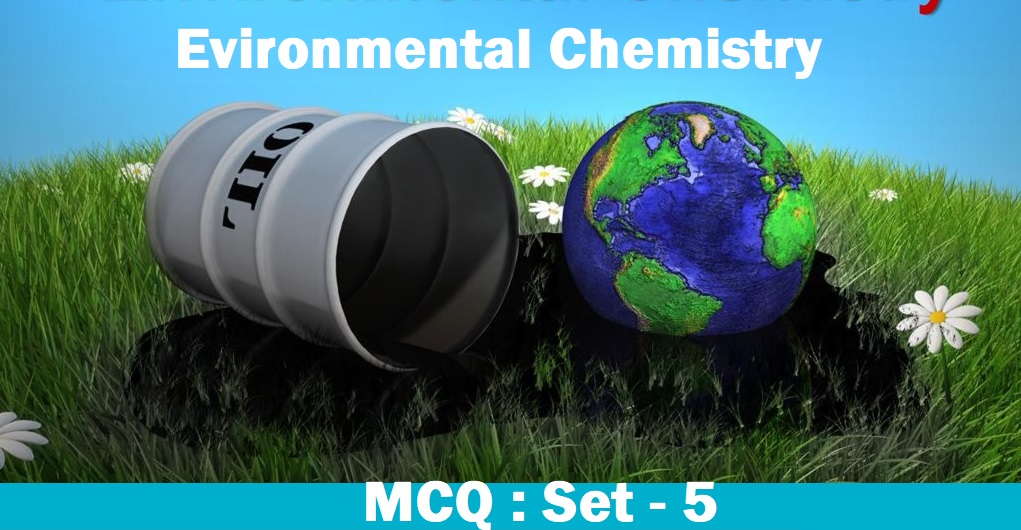CBSE Class 11 Chemistry Chapter 14 Environmental Chemistry Multiple Choice Questions with Answers. MCQ Questions Class 11 Chemistry Environmental Chemistry with Answers was Prepared Based on Latest Exam Pattern. Students can solve NCERT Class 11 Chemistry Environmental Chemistry MCQs with Answers to know their preparation level.
Students who are searching for NCERT MCQ Questions for Class 11 Chemistry Environmental Chemistry with Answers are compiled here to get good practice on all fundamentals. Know your preparation level on MCQ Questions for Class 11 Chemistry with Answers. You can also verify your answers from our provided MCQ Class 11 Chemistry Environmental Chemistry with Answers. So, ace up your preparation with MCQ of Chapter 14 Chemistry Objective Questions.
MCQ Questions Class 11 Chemistry Environmental Chemistry with Answers - Set - 5
Question 1:
Which of the following is responsible for depletion of ozone layer in the upper strata of the atmosphere?
(a) Polyhalogens
(b) Ferrocene
(c) Fullerencs
(d) Freons.
Correct Answer – (D)
Question 2 :
Question. The pollutants which came directly in the air from sourcesare called primary pollutants. Primary pollutants are sometimes converted into secondary pollutants. Which of the ollowing belongs to secondary air pollutants?
(a) C O
(b) Hydrocarbon
(c) Peroxyacetyl nitrate
(d) None
Correct Answer – (C)
Question 3 :
Question. The smog is essentially caused by the presence of
(a) Oxides of sulphur and nitrogen
(b) O2 and N2
(c) O2 and O3
(d) O3 and N2
Correct Answer – (A)
Question 4 :
Question. The non-viable particulate among the following is
(a) Dust
(b) Bacteria
(c) Moulds
(d) Fungi
Correct Answer – (A)
Question 5 :
Question. Photochemical smog formed in congested metropolitan cities mainly consists of
(a) ozone, peroxyacetyl nitrate and NOx
(b) smoke, peroxyacetyl nitrate and SO2
(c) hydrocarbons, SO2 and CO2
(d) hydrocarbons, ozone and SO2
Correct Answer – (A)
MCQ Questions Class 11 Chemistry Environmental Chemistry with Answers
Question 6 :
Question. Which of the following statements about photochemical smog is wrong?
(a) It has high concentration of oxidising agents
(b) It has low concentration of oxidising agent
(c) It can be controlled by controlling the release of NO2, hydrocarbons ozone, etc.
(d) Plantation of some plants like pinus helps in controlling photochemical smog.
Correct Answer – (B)
Question 7 :
Question. Air pollution causing photochemical oxidants production include
(a) Carbon monoxide, sulphur dioxide
(b) Nitrous oxide, nitric acid fumes, nitric oxide
(c) Ozone, peroxyacetyl nitrate, aldehydes
(d) Oxygen, chlorine, fuming nitric acid
Correct Answer – (C)
Question 8 :
Question. Photochemical smog occurs in warm, dry and sunny climate. One of the following is not amongst the components of photochemical smog, identify it.
(a) NO2
(b) O3
(c) SO2
(d) Unsaturated hydrocarbon
Correct Answer – (C)
Question 9 :
Question. In almost all Indian metropolitan cities like Delhi, the major atmospheric pollutant(s) is/are
(a) suspended particulate matter (SPM)
(b) oxides of sulphur
(c) carbon dioxide and carbon monoxide
(d) oxides of nitrogen
Correct Answer – (A)
Question 10 :
Question. Classical smog occurs in places of
(a) excess SO2
(b) low temperature
(c) high temperature
(d) excess NH3
Correct Answer – (B)
- NCERT Solutions Class 11 Chemistry Chapter 1 : Some Basic Concepts of Chemistry
- NCERT Solutions Class 11 Chemistry Chapter 2 : Structure Of The Atom
- NCERT Solutions Class 11 Chemistry Chapter 3 : Classification of Elements and Periodicity in Properties
- NCERT Solutions Class 11 Chemistry Chapter 4 : Chemical Bonding and Molecular Structure
- NCERT Solutions Class 11 Chemistry Chapter 5 : States of Matter
- NCERT Solutions Class 11 Chemistry Chapter 6 : Thermodynamics
- NCERT Solutions Class 11 Chemistry Chapter 7 : Equilibrium
- NCERT Solutions Class 11 Chemistry Chapter 8 : Redox Reactions
- NCERT Solutions Class 11 Chemistry Chapter 9 : Hydrogen
- NCERT Solutions Class 11 Chemistry Chapter 10 : The s-Block Elements
- NCERT Solutions Class 11 Chemistry Chapter 11 : The p-Block Elements
- NCERT Solutions Class 11 Chemistry Chapter 12 : Organic Chemistry: Some Basic Principles and Techniques
- NCERT Solutions Class 11 Chemistry Chapter 13 : Hydrocarbons
- NCERT Solutions Class 11 Chemistry Chapter 14 : Environmental Chemistry



